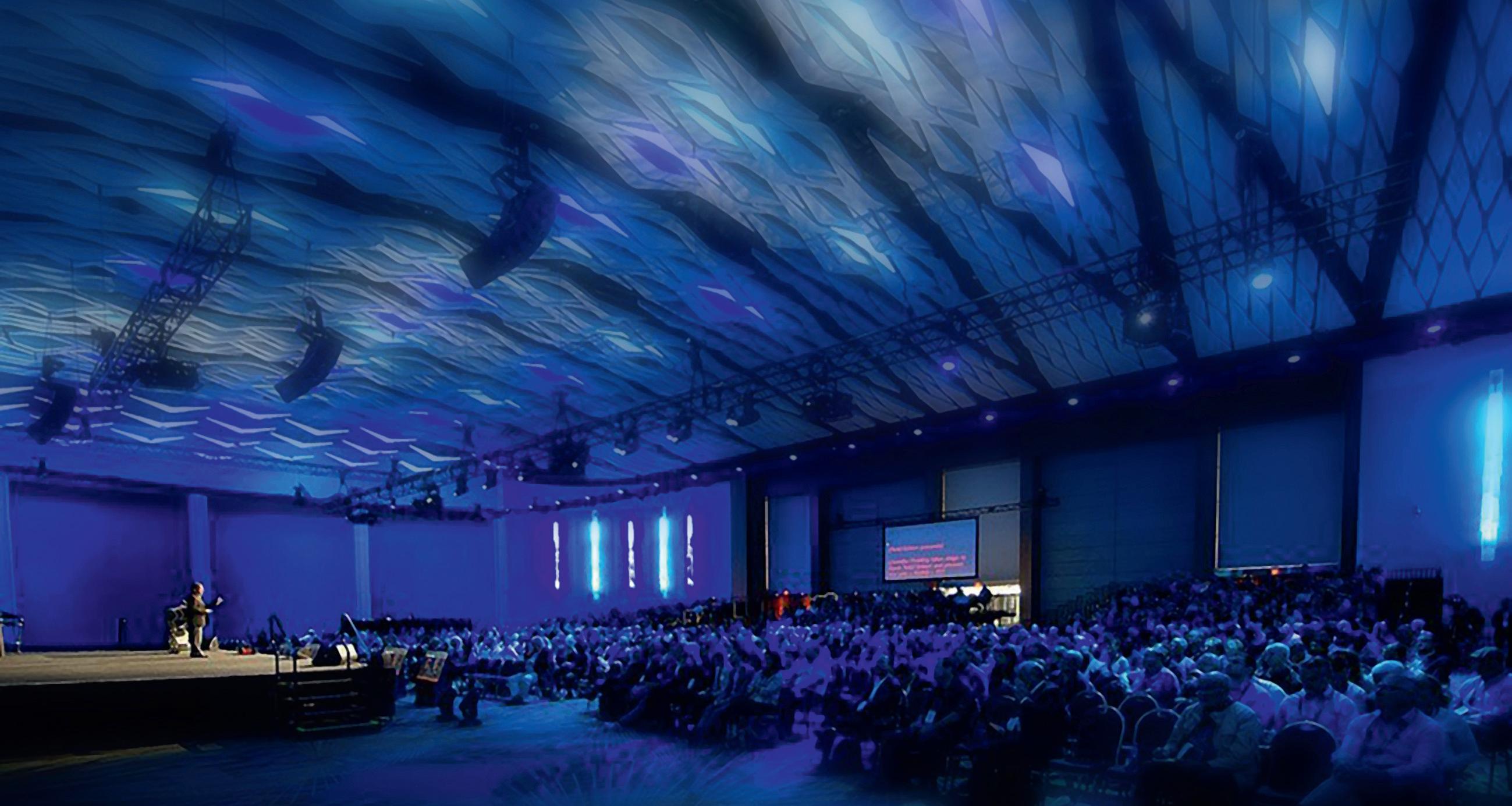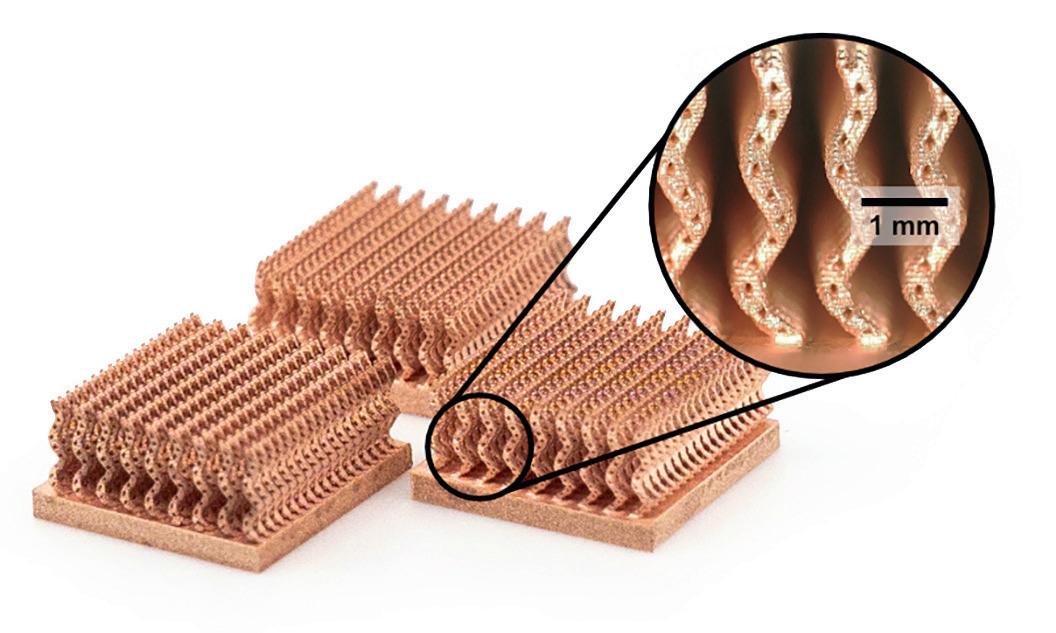
4 minute read
AM Community Shows Off at RAPID + TCT

It’s official. Additive Manufacturing is thriving and continues to gain momentum with successes across diverse applications. In addition to ongoing technology advances, AM’s growth is fueled by a host of engaged companies, organizations, and dedicated professionals, all of whom are energized and passionate about developing, implementing—and sharing—new ideas and best practices throughout a collaborative community of innovators.
“Most hospitals generating 3D datasets rely on engineers to assign file names and store images in the proper folders. But this doesn’t provide the level of control or detail that many practitioners would like to see, so we allow users to assign metadata to their 3D objects, avoiding the remote possibility that a 3D heart image belonging to patient Smith could accidentally get assigned to patient James.” are suitable for the operating room, but such materials are not as widely available across other technologies as he’d like. “Medical teams would prefer to have the 3D-printed models they practiced on available as a reference during the actual surgery,” he added. “We can’t always give them that with our current printers and materials.”
Suzy Marzano Senior Manager Industry Development and Technical Activities


Ironically, Ryan never intended to go into the medical field, although he’s had an interest in 3D printing since his early days volunteering at a research lab while attending Arizona State University. Back then, he was pursuing a career in art animation, or as he likes to put it, “Pixar special effects-type stuff.”
3D-printing services. At RAPID + TCT, she moderated a panel discussion on 3D printing for point-of-care medical applications. The panel was one of several during a special town hall hosted by the Medical AM Advisory Team.
Ryan notes that the response has been quite positive and “overall numbers have skyrocketed” on these digital reconstructions, as well as those produced via 3D printing. His and Gholami’s next step is to equip their software with virtual reality (VR) or augmented reality (AR) capabilities. “Anything we can do to provide a greater sense of depth and perception will be a big step forward, and AR/VR shows great promise in this respect,” he said.
The recent RAPID + TCT conference, which was held May 17–19 in Detroit, is proof positive as to how far AM has come in recent years. The 31st edition of the industry’s marquee event featured more than 400 exhibitors, hundreds of speakers and expert panelists, dozens of technical sessions, networking opportunities, and attendees from 38 countries.
Other highlights included the winners of the 2022 SME Additive Manufacturing Community Awards: Slade Gardner, founder of Big Metal Additive (Industry Achievement); VELO3D and IMI Critical Engineering (Aubin AM Case Study); and Virginia Tech students Daniel Chirvasuta, Nathanael High, Matthew Martin, Benjamin Nguyen, Omkar Shinde, and Nicolas Tomanelli (Digital Manufacturing Challenge).
To help foster the next generation of innovators, the SME Education Foundation’s Bright Minds Program welcomed nearly 1,000 middle and high school students to RAPID + TCT. There also was a special networking lunch for young professionals and a Career Forum Panel. The initiative is led by Ellen Lee and Jennifer Coyne, who are both advisors on the Additive Manufacturing Technical Community Leadership Committee.
Cut and Color
The AM community took center stage throughout the show. This includes the passing of the baton in two key leadership positions. John Barnes assumed the chair of the Additive Manufacturing Technical Community Leadership Committee, succeeding Christopher Williams; and Sarah Rimini now chairs the Medical AM Advisory Committee, succeeding Amy Alexander. I’d like to thank Christopher and Amy, who provided exemplary leadership and vision during their tenures, and welcome their replacements.
John, who heads The Barnes Global Advisors and Metal Powder Works, has been involved in metal additive manufacturing throughout a distinguished career. He’s led teams that qualified the aerospace industry’s first series production metal AM parts, and developed a pilot metal production facility.

Another potential big step forward is one that’s out of Ryan’s control: greater build speed. “It’s unlikely that we’ll ever be able to print anything fast enough for a patient who has experienced significant trauma because they’re typically moved to surgery quickly, but we would love the ability to print models for surgeries consistently later in the day. That’s very challenging right now, as we usually need a full business day to turn something around.”
As senior manager of Ricoh’s Healthcare Center of Excellence, Sarah is developing a curriculum for the company’s Learning Institute that focuses on medical managed
He’d also like to see the industry develop more “human-like” materials. Although companies such as Stratasys have done a good job at giving 3D-printed organ models realistic colors, surgeons want these replicas to feel like muscle and tissue, not polymer, when they slice into them.
Another nice-to-have feature would be greater sterilizability. Ryan noted that HP Inc. and Formlabs offer materials that
SME Media also interviewed dozens of AM leaders during RAPID + TCT as part of its Voices AMplified initiative that showcases the people behind the technology. This month’s Voices AMplified report profiles two such visionaries: Olga Ivanova and Carl Dekker. Known as “Dr. O,” Olga has worked on innovative projects for the medical and defense industries, and is a tireless crusader for advancing AM.
Carl puts the emphasis on people. He leads a talented team at Met-L-Flo, which produces a wide range of 3D-printed products. He also chairs the Direct Digital Manufacturing Advisory Team and moderated a panel at RAPID + TCT.
Carl and Olga represent the spirit behind Voices AMplified. I hope you enjoy their stories.
That eventually led him to biomedical engineering, first as a research scientist and director of the Cardiac 3D Print Lab (established 2012) for Phoenix Children’s Hospital, and now at Rady Children’s. Through it all, he’s enjoyed leveraging AM’s capabilities in this area and, most especially, making a positive impact on children’s lives.
“Like I said, I’d planned to go into computer graphics and probably get a job in the entertainment industry after college,” he said. “But once I got involved with 3D printing and the development of heart models for young people, everything just kind of clicked. It’s a very rewarding career.”










